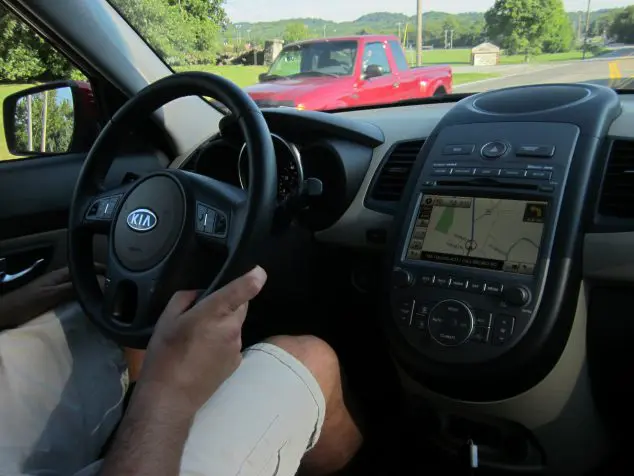Teen drivers are much more likely to have a driving accident than experienced adult drivers. According to the NHTSA, the unfortunate fact is, “crashes are still the leading cause of teen deaths”. The good news is that proper guidance from parents can decrease the chances of teenagers being involved in an accident. Before they get on the road, it’s a good idea to lay down some rules for teen driver safety. Here are five teenage driver safety tips and six ways you can help decrease the likelihood of teenage driving accidents.

5 Teen Driver Safety Tips
Before your teenager gets their drivers license, there are several things you will want to teach them besides just how to drive. Many any accidents are caused by speeding, texting, and/or inexperience. Helping your teen get the practice they need in various conditions and the giving them some important warnings will help keep them safe. Here are five prerequisites to teen drivers license to go over with your teen before they start driving without you in the car. Sure, your teen has to know how to drive a car before they can get their drivers license but, here are some other things they should know too!
1. Start Driver Training Early
Children learn the basics of how to drive long before the legal driving age is reached. If Mom and Dad drive fast, the new driver will too. If Mom and Dad do not wear seat belts, neither will the teen driver. Furthermore, if Mom and Dad talk on cell phones and text while driving, so will the young driver. Actions speak louder than warnings or threats of punishment. Children have ridden along with parents for tens of thousands of miles learning what Mom and Dad do or do not do while driving.
As soon as your teen is old enough to get a drivers learning permit, get them to study and take the test. The more time they have their learning permit, the more practice they can get driving with a parent before they get their license. The more practice, the better driver they will be become, especially with you there to coach them.
2. Teach Teens About Insurance Rates
Show teen drivers the monthly cost to insure them. Require new drivers to pay the extra premiums. Let teens view the actual insurance bill before and after they have been added. Get a brochure from the insurance agency or have an agent explain rate increases for speeding tickets and accidents. Show the real cost for even a tiny fender bender accident. Teens should understand the privilege and gravity of driving and take responsibility.
Auto Insurance For Your Teen Driver Is REQUIRED. Before allowing your teen to drive, make sure they are insured. You may want to reduce your deductible while you have teenage drivers so that if a mishap occurs, it won’t be such a financial burden. You may also want to call around and get quotes from other carriers so that you know that you are getting the best pricing available.
3. Teach The Details About Vehicles
Show teen drivers the weight of the vehicle found on a sticker on the door post. Let the thought of how they will be driving a vehicle that weighs more than a ton at speeds that carry them the length of a football field in less than four seconds sink in. The concept of miles per hour is often lost on teens. Explaining that at 60 miles per hour a distance of 88 feet per second is traveled is easier to assimilate. According to Texas A&M Transportation Institute, teens are more likely than older drivers to speed and allow shorter following distances. Understanding that statistic may help them be more aware and do a better job leaving safe distances.
Also, be sure to share with your teens other details about the vehicle they will be driving such as where the spare tire is and how to change it. They also clearly need to know where the gas tank is and how to fill the tank. Test their knowledge of where the wipers are and where the lights are. Go over the safety lights that may appear on the dash.
4. Take Them Driving in All Conditions
A teen may get a license in the summer and have no winter or rainy season driving experience. The first day the weather gets bad is the day to go and teach. Do not let a teen driver figure out how to drive in bad weather alone. They should get experience driving in poor weather with you at their side to coach them. They need to know when to use high beams and other useful bad weather safety tips.
5. Sign Teens Up For a Driving Course
A good teen driving school will instruct teens on the basic laws and rules associated with driving a vehicle, but not all driving schools are of the same quality. Find reviews online, and call several drivers ed schools to learn more about them. Ask what techniques they teach new drivers and what kind of experience their instructors have. Providing your teen driver with as much knowledge and experiences as possible will help them to be as prepared as you can make them. This one is so important that many car insurance companies will provide a discount once they get a certificate of completion.
6 Ways To Avoid Common Causes Of Teenage Driving Accidents
1. Limit the number of passengers
Teens who drive with other passengers in the car are more likely to get into an accident than teens who drive alone. The risk goes up with every passenger in the car. Until they have a year or two of experience behind the wheel, you may want to restrict your teens to driving with one passenger at the most. If teens do drive with friends, discuss with them how they can encourage their passengers to be less of a distraction.
2. Create rules to limit other distractions
Whether teens are talking, texting or just reaching for the phone, cell phone usage while driving is a dangerous distraction, and teens need to know they should keep their eyes on the road at all times. Make sure they understand that cell phones are only for emergencies while driving, and even then, they need to pull over to the side of the road to use theirs. Eating, drinking, and applying makeup while driving can also be serious hazards. Make it absolutely clear that there is no texting while driving. Discuss with your teenager the dangers driving can present when they do not giving driving their full attention.
3. Set rules for driving at night
Even for experienced drivers, nighttime driving can be hazardous. New drivers are less likely to anticipate dangers in the road and less likely to react quickly enough to avoid them. Set rules about how late your teen driver can stay out in the evening, and if they’re driving at night, encourage them to stick to familiar roads. Before they go out in the dark, go over the rules of headlight and mirror usage.
4. Choose a good teen driving school
OK, so they may already know the basics of how to drive but a driver’s education course should help reinforce those basics as well as make them aware of common dangers. Additionally, there are driving schools that teach advanced skill sets such as how to handle vehicles in high-risk situations. Both timid and adventurous teen drivers benefit by knowing the truth about how to handle vehicles in extreme situations to help avoid fatal errors. Many drivers swear by defensive driving classes and many insurance companies offer a discount for taking a driving course. Check with your insurance to see what classes qualify and what the discount will be.
5. Track Teen Drivers
Knowing where your young driver is at all times can help to ease the worry. Installing a GPS tracking device on your teen’s car or using a tracking app can help you to know where they are. Although some may consider this option to be an invasion of privacy, remember that your child is still under your watch and therefore has limited privacy. You can choose to tell your child that this device is on their car or not. This is a parental decision that needs to be made on a child by child basis.
6. Stay Involved In Your Teen’s Driving
Teen drivers are statistically worse drivers because they lack experience. You can help your teen get experience by allowing them to drive when you are in the car together. This way you can see how they drive and provide feedback. You can make sure your teen has safe driving habits and that they aren’t doing reckless things like checking their phone or listening to music too loud.
It goes without saying that they should understand that driving and drinking is the most dangerous thing they can do. It is taking their own life and those of others on the road into careless hands.

Make Sure Your Teen Knows What To Do In Case Of An Accident
When implementing these teen driver safety rules to prevent causes of teenage driving accidents, you still need to discuss the worst case scenario. Talk to your teen about what you expect if they are to get in an accident or get a driving violation.
All too often, young drivers become petrified about what the outcome may be when they find themselves in these situations and then try to take matters into their own hands. This can have negative ramifications not only on the teen, but also on you. A young driver does not know how to behave in an auto accident situation, doesn’t know how the accident process works, and doesn’t know how to deal with violations. They need to be educated on everything that you expect of them as well how to prevent driving accidents and what to do when in adverse situations and what the outcome will be if something were to happen.
Conclusion
The key to safe driving and teens is learning real skill sets on how to handle bad weather, aggressive drivers, and friends who try to encourage bad choices and other risks. Do not hesitate to take away driving privileges for infractions. It could save your child’s life.
It’s always exciting to see your child grow and accomplish new things. Having a child get to that momentous milestone of turning sixteen and being able to get behind the wheel alone can have mixed emotions. Discussing safety rules and asking questions about their driving habits will help keep safety top of the mind for your teen. Do you have teen drivers? To have you tips for those with teen drivers you want to share?
Related Posts:
Parenting Teens Who Think They Know It All
Don’t Make These Mistakes Parenting Your Teen


Christy Garrett @ Uplifting Families says
My daughter will be driving one day and I plan on restricting the number of distractions in the car. I didn’t realize that passengers added distractions but after reading this post it makes perfect sense since they are likely to talk or do things they normally wouldn’t do when they are alone. Thank you for sharing these valuable driving tips. I am still afraid to let my daughter behind the wheel of the car.
Nicole Stanley says
All these are useful and practical tips to follow to be safe on the road. I use to frighten with thought of driving but with the lot of practice and year of driving I am overcome with the fear .My daughter is too young to learn driving but whenever the right day will come I will explain all the rules and driving habits properly.